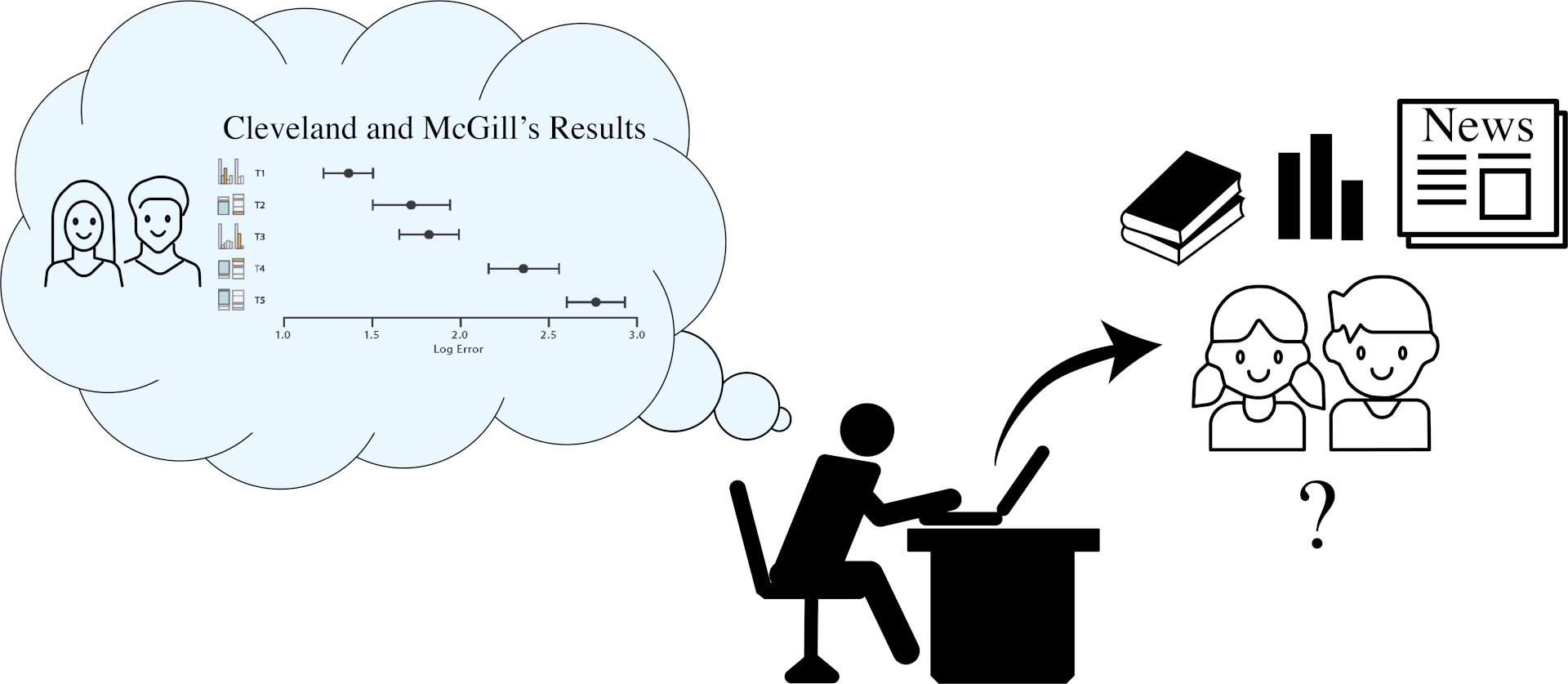Juvenile graphical perception: A comparison between children and adults

Abstract
Data visualization is pervasive in the lives of children as they encounter graphs and charts in early education and online media. In spite of this prevalence, our guidelines and understanding of how children perceive graphs stem primarily from studies conducted with adults. Previous psychology and education research indicates that children’s cognitive abilities are different from adults. Therefore, we conducted a classic graphical perception study on a population of children aged 8–12 enrolled in the Ivy After School Program in Boston, MA and adult computer science students enrolled in Northeastern University to determine how accurately participants judge differences in particular graphical encodings.We record the accuracy of participants’ answers for five encodings most commonly used with quantitative data. The results of our controlled experiment show that children have remarkably similar graphical perception to adults, but are consistently less accurate at interpreting the visual encodings. We found similar effectiveness rankings, relative differences in error between the different encodings, and patterns of bias across encoding types. Based on our findings, we provide design guidelines and recommendations for creating visualizations for children. This paper and all supplemental materials are available at osf.io/ygrdv.
Authors
Citation
Juvenile graphical perception: A comparison between children and adults
Liudas Panavas, Amy Worth, Tarik Crnovrsanin, Tejas Sathyamurthi, Sara Cordes, Michelle A. Borkin, and Cody Dunne. Proc. CHI Conference on Human Factors in Computing Systems—CHI. 2022. DOI: 10.1145/3491102.3501893
PDF | Preprint | DOI | Supplement | Video Preview | Video Presentation | BibTeX
Khoury Vis Lab — Northeastern University
* West Village H, Room 302, 440 Huntington Ave, Boston, MA 02115, USA
* 100 Fore Street, Portland, ME 04101, USA
* Carnegie Hall, 201, 5000 MacArthur Blvd, Oakland, CA 94613, USA




